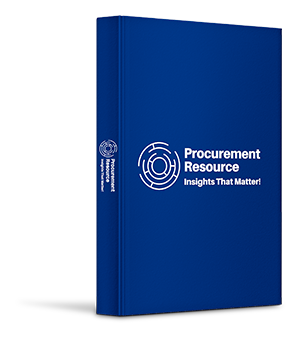Reports

Global Maltose Market: Country Overview; Recent Events; Value Chain Analysis; Production Process; Price Analysis; Indicator Analysis; Market Dynamics: Drivers & Constraints, Innovations & Trends, SWOT Analysis, Porter’s Five Forces; Industry Best Practices: Sourcing Strategy, Procurement Model, Key Factors Influencing the Quotation; Key Supplier Analysis, 2024-2032
Maltose Industry Report by Regional Category Spend, Price Analysis, Key Demand and Price Indicators, and Best Buying Practices
The global maltose reached a value of about 3.76 MMT in 2021. The industry is projected to grow at a CAGR of around 1.5% in the forecast period of 2022-2027 to reach a value of about 4.11 MMT by 2027.
The high maltose syrup is used in various foods to improve flavour, structure, and texture while also providing resistance to colour development, moisture absorption, and crystallisation in final goods such as hard candies. It gives the completed items excellent solidity and clarity. The key demand indicator in the industry report is the highest category spender by region— North America.
Industry Definition and Segmentation
Maltose, sometimes referred to as malt, is a disaccharide composed of two alpha D glucose units. An alpha 1,4 glycosidic bond connects the two units of glucose. The enzymes maltase and isomaltose break down maltose molecules into two glucose molecules in the human small intestine mucosa, absorbed by the body. On the other hand, a disaccharide is a carbohydrate created by combining two glucose units. Sucrose, maltose, and lactose are the three most common disaccharides. Lactulose, trehalose, and cellobiose are three more disaccharides that are less well-known. Dehydration reactions occur when one water molecule is eliminated by connecting two monosaccharides, resulting in a disaccharide molecule. The reaction that occurs during this process is known as the dehydration reaction.
Based on historical and projected trends, all segments and categories of the maltose market are examined. The market, and its parts and varieties, are covered from 2016 to 2028. The research identifies the key features and categories that contribute the most to total addressable market revenue growth and the factors driving their growth. The maltose industry report comprises of three segments based on type (food grade, industrial grade, and pharmaceutical grade), application (candy, cold drinks, liquid beverages, and biological Medium), and region-wise (North America, East Asia, Europe, South Asia, Southeast Asia, the Middle East and Africa, Oceania, South America, and Rest of the World).
North America Region is Driving the Growth of the Industry
The maltose market in North America is increasing significantly and is driving the growth of the maltose market to a greater extent. The increasing adoption of advanced technologies in this region and the presence of significant players are expected to provide ample potential possibilities for the market. In addition, the growth in the consumption of the baked products and confectionery in developed regions like North America and Europe are assisting in the increase of the demand for maltose.
Best Procurement Practices
The global maltose industry report by Procurement Resource gives an in-depth analysis of the best buying practices followed by major global maltose products using regions across the globe, such as engagement models, contract terms, and buyer and supplier negotiation levers, among others.
Category Management Studies
Maltose is another form of carbohydrate which is one of the nutrient important for the proper functioning of the human body. The composition of maltose if carbon, hydrogen, and oxygen. Maltose comprises of two glucose molecules joined by a -(1,4′) glycosidic bond. The enzyme amylase enzymatically hydrolyzes amylose, a homopolysaccharide, to produce maltose. Maltase, an enzyme that hydrolyzes the glycosidic link, converts maltose to two molecules of glucose. Maltose is made commercially from starch that has been treated with barley malt. The enzyme amylase catalyses the enzymatic breakdown of starch which is a homopolysaccharide to yield maltose. The enzyme maltase further hydrolyses maltose to create two molecules of d-glucose.
The hemiacetal of the -d-glucopyranosyl unit is the monosaccharide unit on the left. An -(1,4) glycosidic bond connects to the aglycone -d-glucopyranose. The glycosidic bond's oxygen atom is roughly in the middle of the structure, between the two rings. It is axially thrust down, and thus the links is axial-equatorial because it is linked to C-4 of the aglycone.
Maltose Application to Candy, Cold Drinks, Liquid Beverage and Biological Medium are Further Driving the Procurement of Maltose
The food industry's increased demand for natural and healthy ingredients is driving up demand for high-maltose syrups, particularly those made from corn or other natural sources. The segment's growth is being aided by expanding customer demand for natural and gluten-free food products and increased health awareness. Due to the unfavourable reputation of high fructose corn syrups, which are claimed to have detrimental health effects, high-maltose corn syrups have seen increased demand as a food ingredient in recent years. Maltose is a less dangerous sugar than fructose and galactose. Furthermore, maltose's consistent qualities may increase product demand in the pharmaceutical business as a substitute for chemically generated sugar.
The regional markets for the industry can be divided into North America, South America, Europe, the Middle East and Africa, and the Asia Pacific.
Key Industry Players Mentioned in the Fructose Industry Report
- Shandong Bailong Chuangyuan Bio-Tech Co., Ltd.
- Wuxi Gum Base Co. Ltd.
- Om Enterprises,
- Honest Derivatives,
- Radha Govind Industries
- AWA for Food Additives,
- Zukan
- Burgosano.S.L
- Alimad
- Falcon SA
- Special Ingredients Ltd.
Market Landscape
The food industry's increased demand for natural and healthy ingredients is driving up demand for high-maltose syrups, particularly those made from corn or other natural sources. The segment's growth is being aided by expanding customer demand for natural and gluten-free food products and increased health awareness. In recent years, high-maltose corn syrups have seen an upsurge in demand as a food additive. Maltose is a less dangerous sugar than fructose and galactose. Furthermore, maltose's consistent qualities may increase product demand in the pharmaceutical business as a substitute for chemically generated sugar. North America is the leading producer for maltose market.
Key Initiatives by Companies
- Novozymes has unveiled a novel enzyme secura that targets the manufacture of maltose syrups. Secura, the new product, aids in the optimization of operations and the reduction of processing expenses. The starch sector, which generates a wide range of sweeteners and chemicals used in the food industry, is one of the oldest markets for enzymes. Secura is a thermostable, low-pH beta-amylase enzyme, it has a higher product activity than plant-based beta amylases, and this activity level remains consistent over time.
1. Executive Summary
2. Maltose Market Snapshot
2.1. Maltose Market Outlook
2.2. Maltose Industry Analysis by Application
2.2.1. Candy
2.2.2. Cold Drinks
2.2.3. Liquid Beverage
2.2.4. Biological Medium
2.3. Region Overview
2.3.1. Asia-Pacific
2.3.2. Europe
2.3.3. North America
2.3.4. Latin America
2.3.5. Middle East & Africa
3. Impact of Recent Events
4. Maltose Value Chain Analysis
5. Maltose Production Process
6. Trade Analysis
7. Major Risk Factors in Sourcing
8. Maltose Cost Structure
9. Maltose Price Analysis
10. Key Demand Indicator Analysis
11. Key Price Indicator Analysis
12. Maltose Market Dynamics
12.1. Drivers & Constraints
12.2. Industry Events
12.3. Innovations & Trends
12.4. Swot Analysis
12.5. Porter’s Five Forces
12.5.1. Buyer Power
12.5.2. Supplier Power
12.5.3. Threat of New Entrants
12.5.4. Threat of Substitutes
12.5.5. Industry Rivalry
13. Industry Best Practices
13.1. Sourcing Strategy
13.2. Procurement Model
13.3. Contract Structure
13.4. Negotiation Levers
13.5. Pricing Model
13.6. Key Factors Influencing the Quotation
14. Key Supplier Analysis
14.1. Cargill, Inc.
14.2. Meelunie B.V.
14.3. Hangzhou Zixiang Sweet Co. Ltd.
14.4. San Soon Seng Food Industries Sdn Bhd
14.5. Austrade Inc.
The global maltose market size was valued at 3.76 MMT in 2020.
As per the rising of new products and research and development services, Maltose industry is expected to lead the global market.
The major demand for Beverages and Biological mediums are the two important drivers of the Maltose market growth.
The leading companies in the maltose industry are Bailong Chuangyuan Bio-Tech Co., Ltd., Wuxi Gum Base Co. Ltd., Om Enterprises, Honest Derivatives.
The Food and beverage segment of the maltose industry holds the major share in the market.
The global maltose market is expected to grow at an annualized rate pace of 1.5 percent to 4.11 MMT by 2027. Maltose is used to improve the flavour, structure, and texture of various foods while also providing resistance to colour development, moisture absorption, and crystallisation in finished products such as hard candies. It gives the completed items excellent solidity and clarity. The major regions in the global maltose market are North America, South America, Europe, the Middle East and Africa, and the Asia Pacific. The key players in the global maltose market include Bailong Chuangyuan Bio-Tech Co., Ltd., Wuxi Gum Base Co. Ltd., Om Enterprises, Honest Derivatives.
Compare & Choose the Right Report Version for You
RIGHT PEOPLE
At Procurement Resource our analysts are selected after they are assessed thoroughly on having required qualities so that they can work effectively and productively and are able to execute projects based on the expectations shared by our clients. Our team is hence, technically exceptional, strategic, pragmatic, well experienced and competent.
RIGHT METHODOLOGY
We understand the cruciality of high-quality assessments that are important for our clients to take timely decisions and plan strategically. We have been continuously upgrading our tools and resources over the past years to become useful partners for our clientele. Our research methods are supported by most recent technology, our trusted and verified databases that are modified as per the needs help us serve our clients effectively every time and puts them ahead of their competitors.
RIGHT PRICE
Our team provides a detailed, high quality and deeply researched evaluations in competitive prices, that are unmatchable, and demonstrates our understanding of our client’s resource composition. These reports support our clientele make important procurement and supply chains choices that further helps them to place themselves ahead of their counterparts. We also offer attractive discounts or rebates on our forth coming reports.
RIGHT SUPPORT
Our vision is to enable our clients with superior quality market assessment and actionable evaluations to assist them with taking timely and right decisions. We are always ready to deliver our clients with maximum results by delivering them with customised suggestions to meet their exact needs within the specified timeline and help them understand the market dynamics in a better way.

Global HEOR Service Market: Size, Trend, Analysis and Forecast 2024-2032
The global HEOR market reached a value of about USD 1364.3 million in 2021. The industry is further expected to grow at a CAGR of about 12.81% in the forecast period of 2022-2027 to reach a value of around USD 2779.2 million by 2027.

Global Artificial Intelligence Market: Size, Trend, Analysis and Forecast 2024-2032
The global Artificial Intelligence Market reached a value of about USD 192 Billion in 2021. The industry is projected to grow at a CAGR of around 23% in the forecast period of 2022-2027 to reach a value of about USD 664.86 Billion by 2027.

Global Nutmeg Market: Size, Trend, Analysis and Forecast 2024-2032
The global nutmeg market reached a value of about 134 thousand tonnes in 2021. The industry is further expected to grow at a CAGR of about 4.5% in the forecast period of 2022-2027 to reach a value of around 167 thousand tonnes by 2027.
